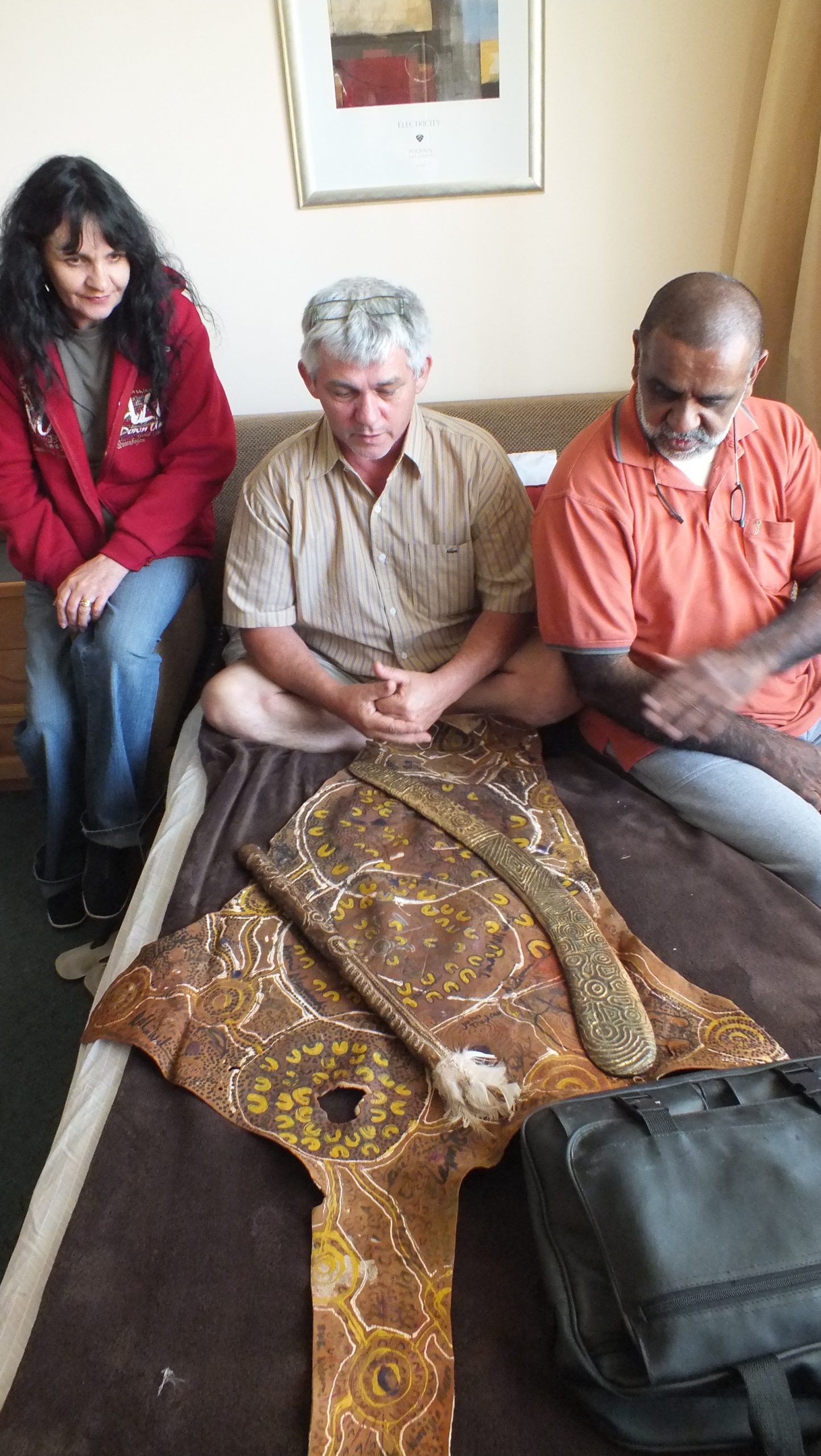Introduction
This is the page citing some of the documents used in the Ramindjeri Native Title Claim filed on the 22nd of November 2010.
If you haven’t already read the overview for the Ramindjeri Sovereign Nation and Native Title Claim this page is a sub page of please visit this link below first.
Part 1 of 7 – Video Evidence supporting Uncle Karno
Video of vote to elect Uncle Karno as representative for Ramindjeri Native Title Claim – 2010
Court Documents
Part 2 of 7 – Original Tribal Sovereign Federation Signatories Kangaroo Skin
This Kangaroo skin in the photo on the right was entered into evidence in the Native Title Tribunal for both the Native Title and Sovereignty cases.
The original purpose and use of this Kangaroo skin.
This Kangaroo skin was created as a legal document to gather signatories for the Original Sovereign Tribal Federation. Many tribes from across Australia have signed this document, including the Ramindjeri Tribe.
In this picture the founder of the Original Tribal Sovereign Federation Uncle Gunham Badi Jakamara (Mark McMurtrie) is seated in the middle of Aunty Unbulara and Uncle Karno witnessing the signing of this skin document by Unbulara and Karno.
According to Tribal Lore, both a female and male elder must give permission to enter their tribe into an agreement.

Part 3 of 7 – Native Title Boundary Map
Part 4 of 7 – Lack of evidence supporting Pre-Settlement Existence of Kaurna Tribe
It is important to note that even according to wikipedia’s own page on the Kaurna that there was no common name for the various tribes of the Adelaide region, as seen in this quote from that page;
As seen in the quote above, a common recurring theme with colonisation is the desire of the colonists to simplify dealings with local tribes by inventing brand new “nations” out of groups of tribes where none existed before.
The excerpts in the PDF below are taken from the 1990 issue of the “Journal of the Anthropological Society of South Australia” and highlights the issues surrounding the Kaurna name amongst the Anthropological community.
Part 5 of 7 – Additional lack of evidence supporting Pre-settlement Existence of Kaurna Tribe.
Chirr-bookie, the Blue Crane
This dreaming story first appears in this book Myths and Legends of the Australian Aborigines Myths & Legends of the Australian Aboriginals by, W. Ramsay Smith , and is otherwise known as Tjirbruke (also Tjirbruki, Tjilbruki, Tjilbruke, Tjirbuk or Tjirbuki,)
This book was first published in 1930 and predates any evidence of this as a Kaurna dreaming story being recorded by the scientific community or other records from tribal elders.
https://www.austlit.edu.au/austlit/page/6169863
As seen below the first and last pages of this book clearly show this to be a Ramindjeri story.
Part 6 of 7 – Lack of evidence supporting Pre-Settlement Existence of Ngarindjeri Tribe – Wikipedia
Important to note that the term Ngarindjeri was coined by White Settler George Taplin as an umbrella term to cover all of the different tribes gathered at Raukan Mission. The controversy around this term amongst academics is cited below.
Part 7 of 7 – Lack of evidence supporting Pre-Settlement Existence of Ngarindjeri Tribe – page 190 of Tindales Research
Evidence from the book: Aboriginal tribes of Australia: their terrain, environmental controls, distribution, limits, and proper names by Norman Tindale.
The PDF below is page 156 (page 1990 in PDF form) from this book, and is also cited as the source for the word Narindjeri. It is also important to note that this highlighted citation states that there was a fashion amongst Taplin’s compatriots to invent nations out of groups of tribes. The thinking at the time was that there were too many tribes and it would be easier to deal with one big group than lots of small tribes.
